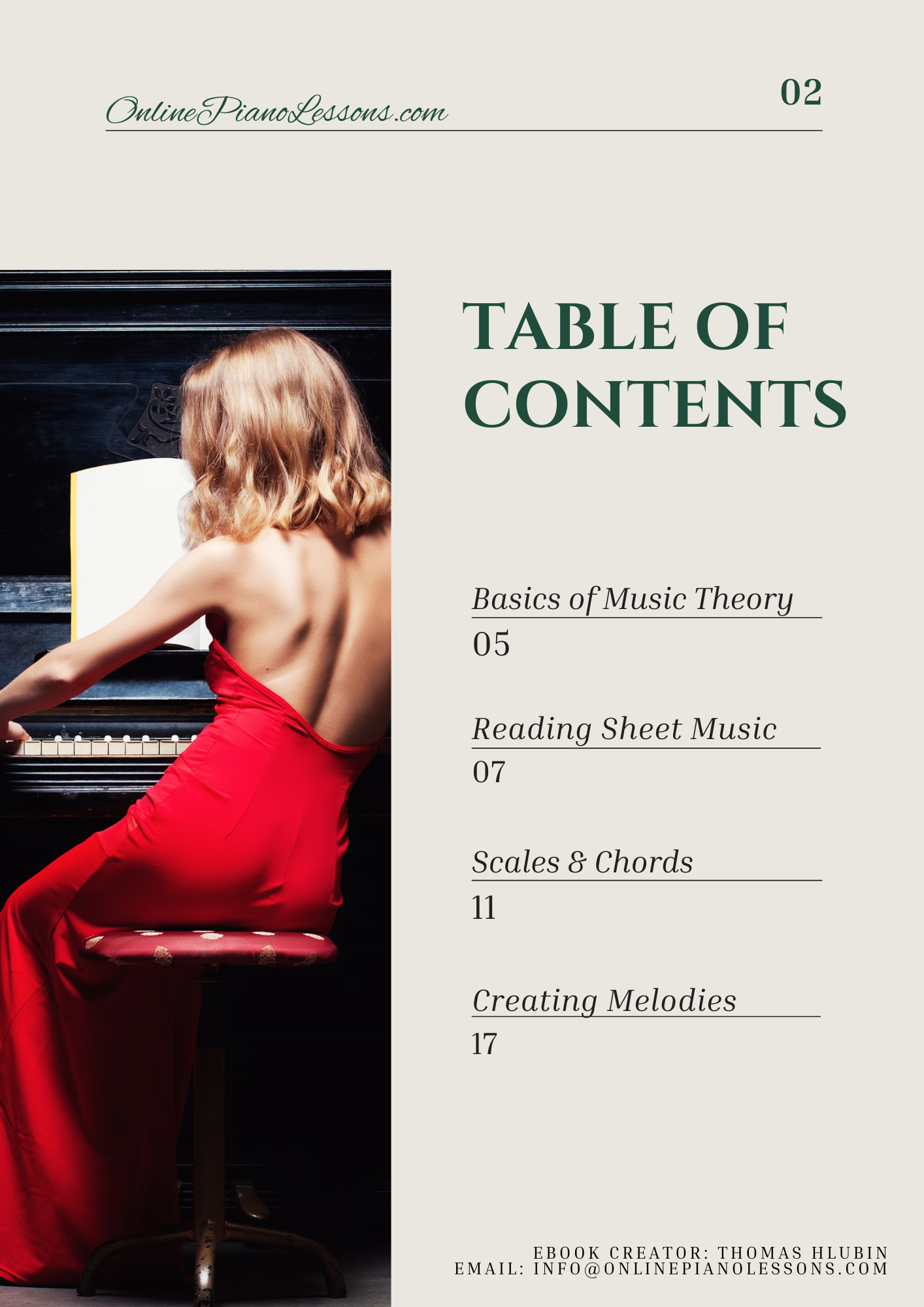The harmonic minor scale is one of the most immediately recognizable and emotionally charged scales in Western music. On the piano, the harmonic minor scale gives composers and performers a distinct sound — dramatic, exotic, and often a little tense — that’s used across classical, film, metal, jazz, and world music. This guide explains what the harmonic minor scale is, how it’s constructed on the piano, how it sounds, common uses, fingerings and exercises, harmonization, and practical tips to make it musical and useful.
What Is The Harmonic Minor Scale?
The harmonic minor scale is a minor-key scale that raises the seventh degree of the natural minor scale by a half step. That single raised note (the leading tone) creates a stronger pull toward the tonic, and it produces the distinctive augmented second interval between the sixth and seventh degrees — the interval that gives the harmonic minor scale its characteristic, slightly “Eastern” or dramatic color on the piano.
For example, A natural minor is:
A – B – C – D – E – F – G – A
A harmonic minor (A harmonic minor scale) is:
A – B – C – D – E – F – G♯ – A
Notice only the G becomes G♯ — but that tiny change alters harmony, melody, and mood in significant ways when you play it on the piano.
The Formula: Building The Harmonic Minor Scale
To construct any harmonic minor scale from its root on the piano, use this interval pattern:
Whole — Half — Whole — Whole — Half — Augmented Second — Half
(W — H — W — W — H — 1½ step — H)
Another way to think of it is: take the natural minor scale and raise the seventh degree by a semitone. That raised seventh (the leading tone) is what distinguishes the harmonic minor scale from other minor forms on the piano.
What The Harmonic Minor Scale Sounds Like On The Piano
Played slowly on the piano, the harmonic minor scale sounds both minor and strongly directional. The raised seventh introduces tension — it wants to resolve to the tonic. The augmented second between the sixth and seventh scale degrees creates an exotic interval that catches the ear. That interval can sound ornamental or plaintive depending on tempo and articulation.
In many piano pieces, composers exploit this tension: long melodic lines in the harmonic minor scale can feel yearning or prophetic, while arpeggios and chords built from the harmonic minor scale add drama and emotional weight.
Harmonic Minor vs Natural Minor vs Melodic Minor
- Natural minor: has a flattened 6th and 7th (e.g., A B C D E F G A) — sounds more modal, darker, and less directional.
- Melodic minor (classical): raises 6th and 7th when ascending; descends as natural minor. Jazz often uses the raised form both ways.
- Harmonic minor: only raises the 7th (e.g., A B C D E F G♯ A), creating the leading tone that pulls to tonic and the augmented second interval.
On the piano, choosing harmonic minor over other minor forms changes both melodic shape and harmonic possibilities — giving composers strong dominant-function chords and distinctive voice-leading.
Harmonization: Chords Derived From The Harmonic Minor Scale
One of the harmonic minor scale’s most important features on the piano is the quality of its chords:
- The raised seventh allows for a major V chord (or V7) in a minor key (e.g., in A harmonic minor, E major or E7 functions as a dominant leading to A minor). This dominant chord is essential to strong cadences in minor keys.
- The tonic triad remains minor, but surrounding chords acquire altered or enriched colors: augmented triads, diminished chords with specific leading tones, and major dominants that wouldn’t occur in natural minor.
- The harmonic minor scale produces a distinctive set of seventh chords (e.g., m(maj7) on i is possible, and V7 is major) that gives minor-key piano music its classical “resolution with power” quality.
These harmonic properties make the harmonic minor scale especially useful for composers who want a decisive dominant in a minor-key progression on the piano.
Common Uses And Genres
The harmonic minor scale appears everywhere on the piano:
- Classical music: for expressive minor-key cadences and dramatic melodies (think Romantic-era pieces).
- Film and game scoring: to create tension, drama, or exotic color.
- Metal and neo-classical: harmonic minor riffs and arpeggios give an aggressive, dramatic sound.
- Jazz and fusion: used for altered colors and as a source for exotic melodic lines (less common than melodic minor, but still useful).
- World and folk music fusion: the augmented second and raised leading tone mirror scales from Middle Eastern and Eastern European traditions, which composers exploit on the piano for authenticity or color.
How To Practice The Harmonic Minor Scale On The Piano
Practical, focused practice will make the harmonic minor scale feel natural:
- One-Octave Hands-Separate — Start slowly. Play A harmonic minor with the right hand, then left. Aim for evenness and clean transitions from white to black keys.
- Hands Together — When both hands are comfortable separately, combine them. Use a metronome and keep tempo slow until even.
- Arpeggios and Broken Chords — Practice i, iv, V (with raised 7) arpeggios. For A harmonic minor: Am (A–C–E), Dm (D–F–A), E (E–G♯–B).
- Sequences and Patterns — Practice 3-note and 4-note sequences up the scale to internalize shifts, especially across the augmented second (F → G♯ in A harmonic minor).
- Melodic Practice — Improvise short melodic lines emphasizing the leading tone resolution (G♯ → A). Make the resolution musical, not mechanical.
Start with a daily 10–15 minute warmup that includes the harmonic minor scale in different keys. That builds familiarity across the keyboard and makes the unique intervals feel natural.
Fingerings And Technical Tips
- Use standard scale fingering patterns adapted to the black/white key layout. The augmented second may require slight adjustments to thumb crossings so you maintain legato.
- Keep the wrist relaxed. The harmonic minor’s exotic intervals can be awkward if you tense the hand.
- Pay attention to articulation: accented leading tones and smooth resolutions make phrases sing. Vary legato and staccato to practice control.
- Practice slowly with a metronome and increase speed only when the scale is even and musical.
Compositional And Improvisational Ideas For The Piano
- Cadential Power: Use the V (major) chord from the harmonic minor to create a powerful minor-to-major dominant cadence.
- Modal Mixture: Borrow harmonic minor harmonies in an otherwise diatonic piece for color.
- Leitmotif: Craft small motifs that use the augmented second — they stick in the ear.
- Improvisation: Over a minor vamp, explore lines that emphasize the raised 7th and the augmented second for a dramatic edge.
Common Mistakes And How To Avoid Them
- Forgetting the raised 7th: easy to default back to natural minor—be deliberate about the leading tone.
- Overusing the augmented second: it’s powerful; use it purposefully, not everywhere.
- Mechanical practice: always make scale runs musical—think dynamics and phrase shape.
- Poor fingering: experiment to find fingerings that keep your hands relaxed and your lines legato.
Final Thoughts
The harmonic minor scale is a small change with big consequences. On the piano, it opens doors to stronger cadences, exotic colors, and emotionally charged melodies. Whether you’re brushing up on classical repertoire, composing cinematic music, or adding a dramatic edge to a jazz solo, mastering the harmonic minor scale will pay creative dividends. Try adding short harmonic minor drills to your daily piano warmup this week — you’ll hear and feel the difference.
FAQ
Q: What is the harmonic minor scale?
A: The harmonic minor scale is a minor-key scale with a raised seventh degree compared to the natural minor, producing a strong leading tone and an augmented second interval.
Q: How does the harmonic minor scale sound on the piano?
A: It sounds minor and dramatic, with a distinct tension created by the raised seventh and the augmented second — often described as exotic, plaintive, or theatrical.
Q: Why use the harmonic minor scale instead of the natural minor on the piano?
A: Because the harmonic minor scale allows for a major dominant (V) chord and stronger cadential resolution, and it adds unique melodic color not available in natural minor.
Q: Is the harmonic minor scale used in modern genres?
A: Yes — film composers, metal musicians, jazz arrangers, and world-fusion artists all use harmonic minor colors on the piano for emotional and exotic effects.
Q: How should I practice the harmonic minor scale?
A: Practice hands separately and together, use arpeggios, sequences, and melodic improvisation, and focus on musical phrasing and evenness rather than speed.
Q: Does harmonic minor work for improvisation?
A: Absolutely. It’s an excellent source for dramatic melodic lines and for creating tension before resolving to a tonic in improvisation.




 Hi, I'm Thomas, Pianist Composer,
Hi, I'm Thomas, Pianist Composer,  I love playing piano, creating new melodies and songs, and further developing my online piano course and making updates/additions to my site OnlinePianoLessons.com!
I love playing piano, creating new melodies and songs, and further developing my online piano course and making updates/additions to my site OnlinePianoLessons.com!  Now that is what I call fun!
Now that is what I call fun!
